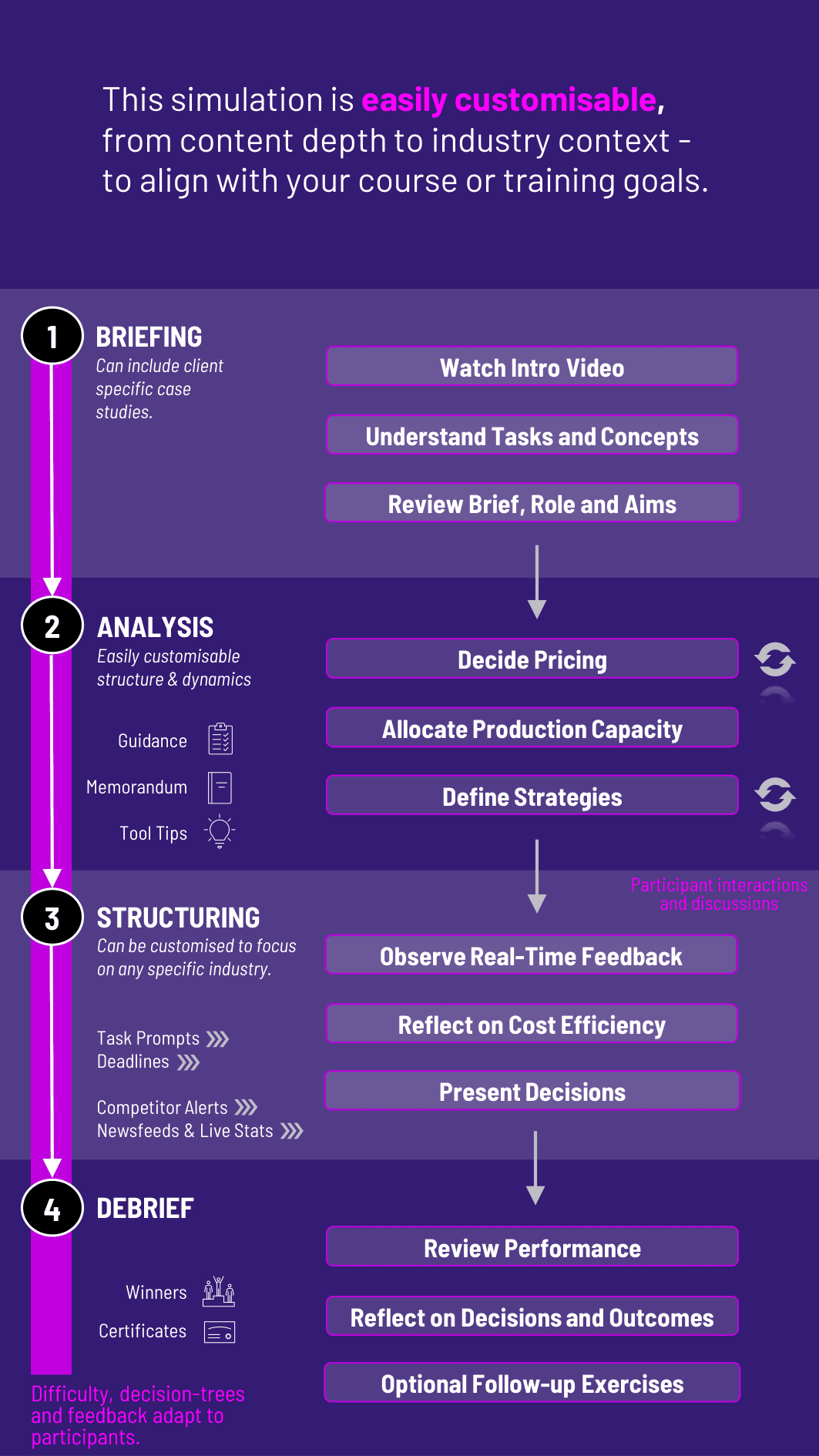
Participants act as market participants - consumers, producers, or regulators - making pricing, production, and purchasing decisions that bring core microeconomic concepts to life in our Microeconomics Course.
Supply and Demand Dynamics: Equilibrium pricing, elasticity, and shifts in market curves
Cost Structures: Fixed vs variable costs, marginal cost, average cost
Market Structures: Perfect competition, monopolistic competition, and oligopoly
Consumer Behaviour: Utility maximization and price sensitivity
Producer Behaviour: Profit maximization, marginal analysis
Government Intervention: Taxes, subsidies, price floors/ceilings, and externalities
Strategic Behaviour: Pricing responses, capacity planning, and market entry/exit decisions


Set prices, choose output levels, and allocate production capacity
Analyze market signals, competitor actions, and customer demand trends
Adjust strategies based on cost changes, government intervention, or shocks
Observe real-time feedback through market equilibrium, profit/loss, and customer share
Reflect on trade-offs between pricing power, cost efficiency, and market share
Debate or present decisions in response to policy changes or regulatory proposals
Participants gain hands-on understanding of how economic theory operates in dynamic settings. They will learn to:
Apply microeconomic models in realistic, evolving markets
Anticipate how shifts in supply and demand affect equilibrium outcomes
Identify optimal pricing and production strategies under different market structures
Understand how regulation and taxation influence firm behavior and consumer outcomes
Experience competition, scarcity, and trade-offs firsthand
Use economic reasoning to justify decisions and interpret market outcomes
Do participants need prior economics knowledge? No prior coursework is required. The course is beginner-friendly and includes built-in guidance for all economic concepts used.
Can the course be used in non-economics courses? Yes. It fits well in general business, policy, or strategy courses looking to introduce economic reasoning and market behavior.
How long does the course take? It can run in a 2-hour session or be spread across multiple class periods with changing market conditions and policy interventions.
Is it best used individually or in teams? Both formats work well. Teams often enhance peer learning and strategic debate.
How is performance assessed? Participants are evaluated on profitability, pricing strategy, economic reasoning, and ability to respond to market and policy shifts.
Join this 20-minute webinar, followed by a Q&A session, to immerse yourself in the course.
or
Book a 15-minute Zoom demo with one of our experts to explore how the course can benefit you.